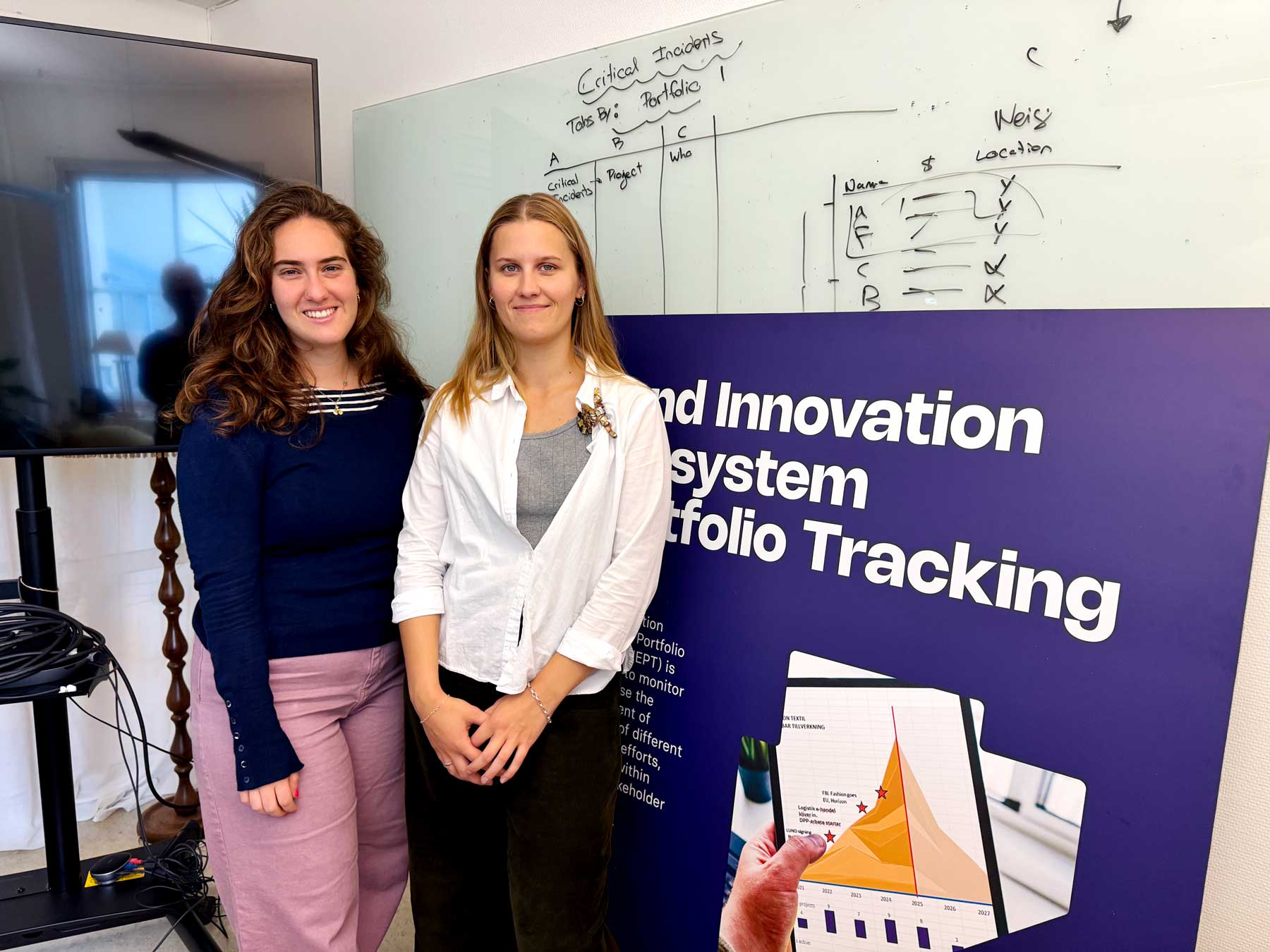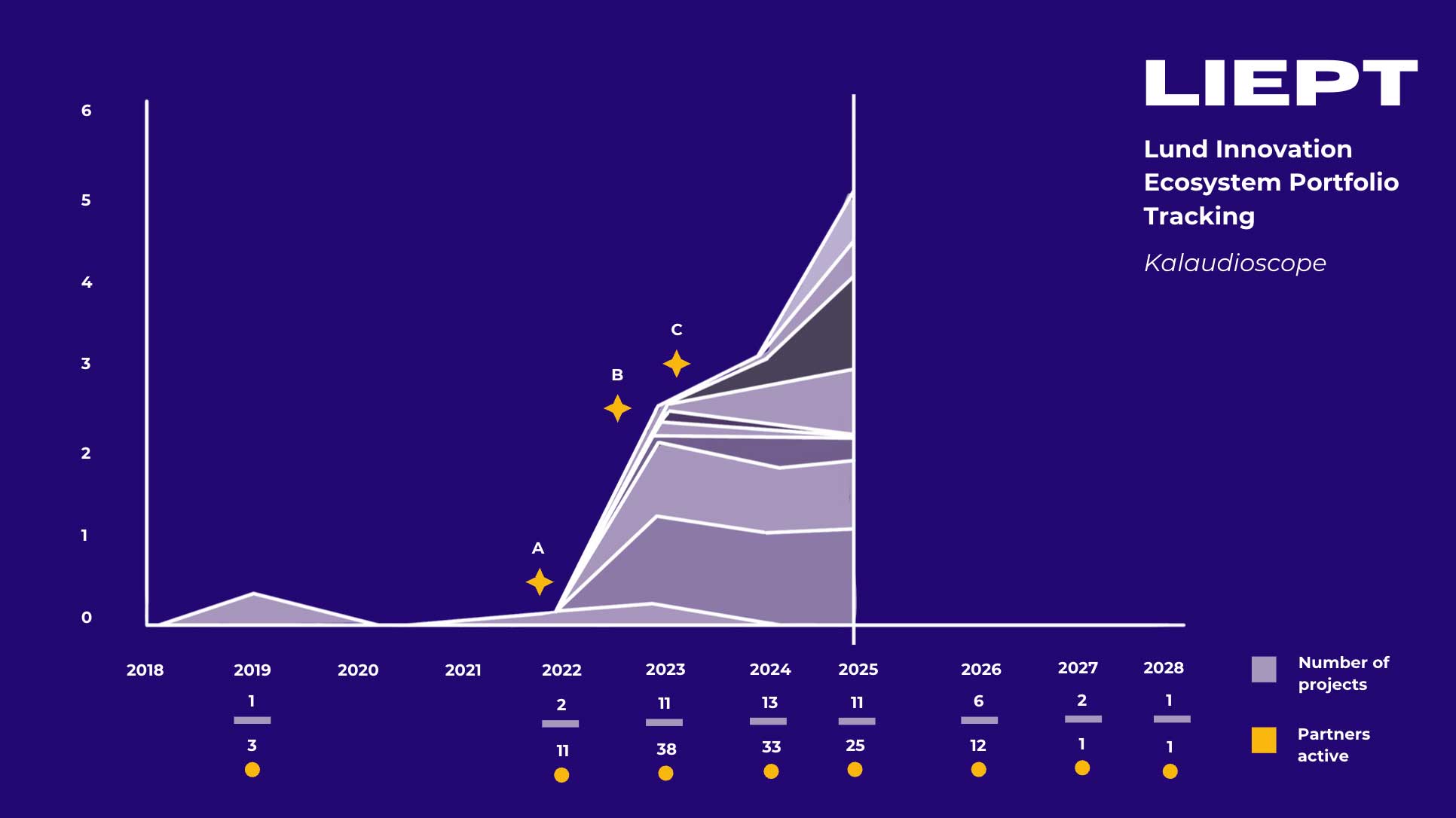Economics students collects data on Future by Lund's portfolios

In recent months, Clara Marins and Frideborg Hjorth have been working to collect data to be able to map the development of portfolios in the collaboration around Future by Lund. The work of tracking changes within a portfolio across organizational boundaries is important in order to be able to demonstrate the results of what is a common work in an ecosystem and can be seen as a parallel to how individual companies' work is shown in annual reports.
Both are studying for a master's degree in economics with a focus on economic development through the programme Global Development, Population and Economic Change. The work they do for Future by Lund is done in several stages by the Liept model and will result in both a description of the network around a portfolio, a timeline, how to call in “critical incidents” and finally to create a manual for how the material will be collected in the future.

For Clara Marin, mapping the ecosystem has been the main focus.
“The ecosystem includes various partners, which can be institutions, financiers, companies and startups, but it can also be parts of institutions and individuals. Based on this knowledge, I conduct interviews to understand what the partnership consists of and what resources different partners have.
Frideborg Hjorth has since gathered the stories behind, such as why one is a partner in the portfolio and then fills in the gaps between the facts that Clara Marins collects. In addition, she creates a timeline of how the portfolio evolves over time and what have been decisive events or decisions, so-called “critical incidents”.
“I find the story behind, that is, how do projects and portfolios start, how do the different projects and portfolios interact with each other and what spill-over effects exist between them. It is also important to capture the breaking points that can explain why the project succeeded, failed, or moved in a particular direction.
The data collection has begun through interviews with the staff at Future by Lund and then continues with partners. The work is carried out in many of Future by Lund's portfolios such as Kalaudioscope, Fashion & Textile transformation, Biosolutions, all portfolios within digitalization, Climate-Neutral City and Innovation Portfolio Approach (IPA).
“In most portfolios, the people in charge see the big and complex picture, but what is complicated is that we should structure it so that it is possible to get it down on an Excel sheet,” says Clara Marins.
There will also be a manual for how the material should be collected so that it is equivalent time to time and thus comparable.
“We need to be both structured and open to the organic at the same time,” says Frideborg Hjorth. We should be able to receive both the things that we knew we wanted but also for what we did not know we wanted.
Once the material has been collected, it will also investigate the benefits of various tools, such as AI, to structure the material.
What has been most exciting during the work?
“It's a very interesting model and tool and it's exciting to be involved and add things to it and to help create understanding of it,” says Clara Marins. It is entirely in line with what we study in economic development and that, of course, makes it particularly interesting.
“It is both scary and rewarding to be in something that is so flexible, but it also means that we learn a lot and see that we can come up with a system,” concludes Frideborg Hjorth.
A first version of the manual is expected to be completed in October 2025.
Facts material for the Liept model
As Future by Lund works on how several people can innovate together, a range of models and tools suitable for an ecosystem are used. The LIEPT model has been jointly developed by Future by Lund and Lund University and it has been born out of the need to be able to follow the evolution of the innovation ecosystem and portfolios over time, creating the conditions for strategic insights and decisions. By combining Vinnväxt's layer model (by Vinnova) with Lund University's tools for advanced data processing of funding data from the Swedish and European public support systems, a way to visualize the development of a portfolio within an ecosystem has been created. This model shows who receives funding, where it comes from and how it is combined, and what additional funding and development of the area has been made possible by the initial funding. The model also records events that have been crucial to the portfolio's growth — “critical incidents”. The models enable players to manage their portfolios strategically and make informed decisions for future actions.
In order to visualize results but also to further develop the model, Future by Lund has already created material about some portfolios. In 2024, LIEPT data was collected on three portfolios, and in the summer of 2025 it was time to find ways to standardize the data collection, both to be able to compare the material and to allow others to use the approach. In addition to the funding data available through Lund University, the two master's students Frideborg Hjorth and Clara Marins have conducted a series of interviews to survey the work within the portfolios, for example by looking at the actors in the ecosystem and the resources they invest.
In order to create a permanent working method, the result should also be a manual on how the data collection should be carried out, and may also result in the identification of some useful tools.
“We have chosen to enlist the help of two master's students who are used to doing this kind of work,” says Katarina Scott, project coordinator at Future by Lund. It will be an update of our own material but the work should also lead to a manual so that we can see what we need to redo this regularly. It has to be systematic and distinct yet reproducible. Students are also looking at how we can use new tools, such as AI, to sort the material.

